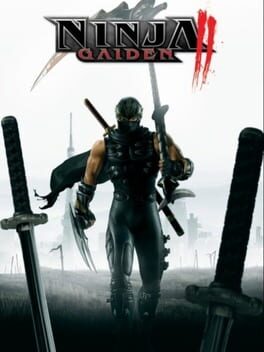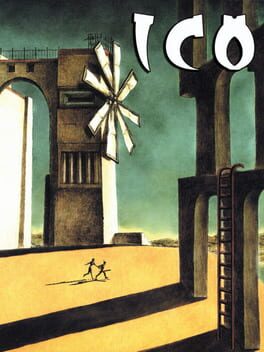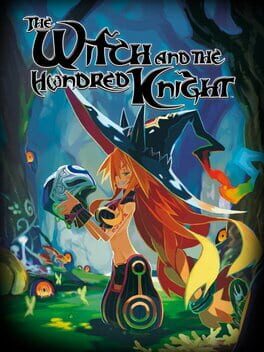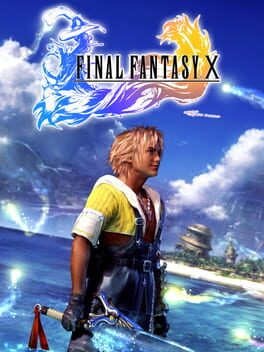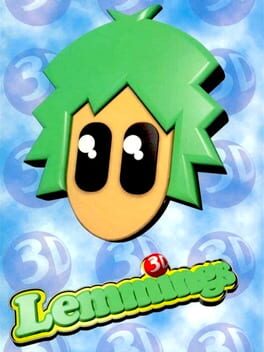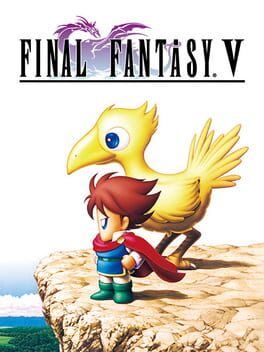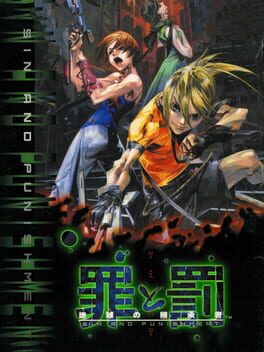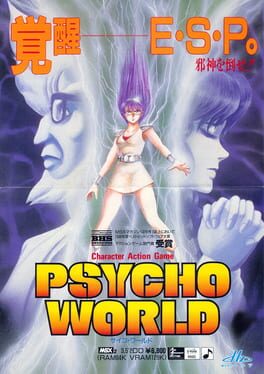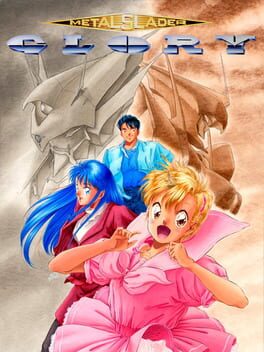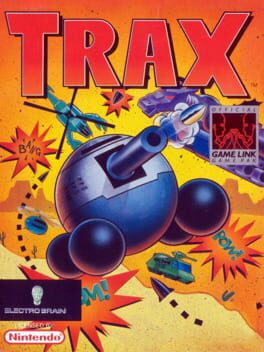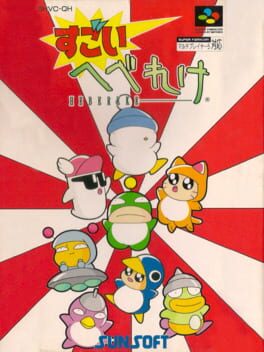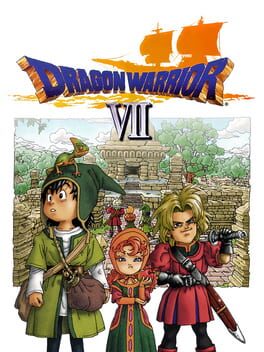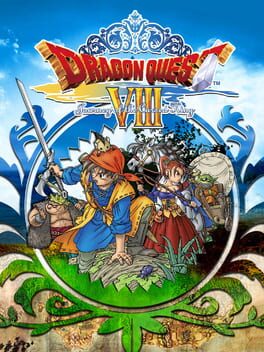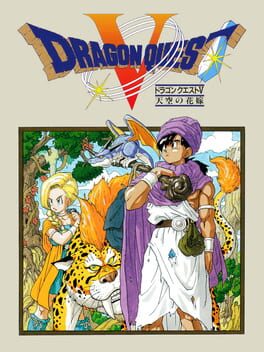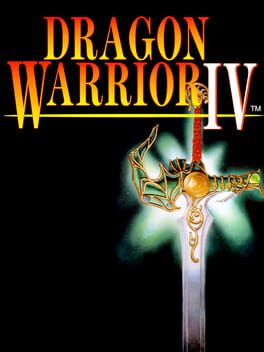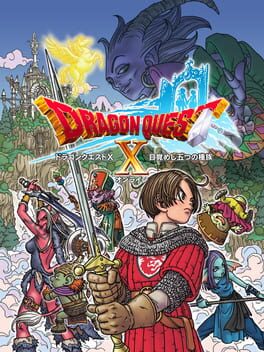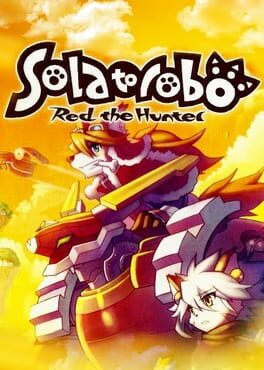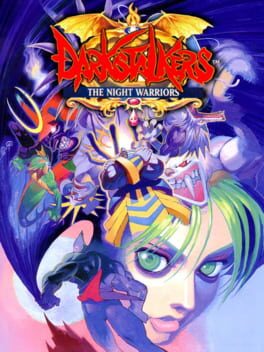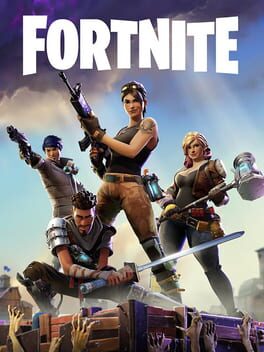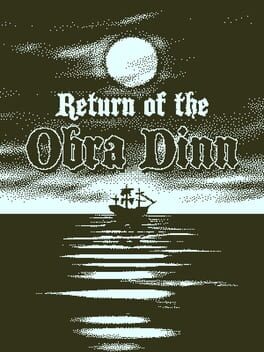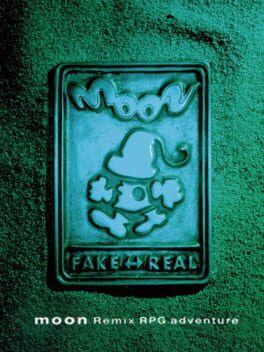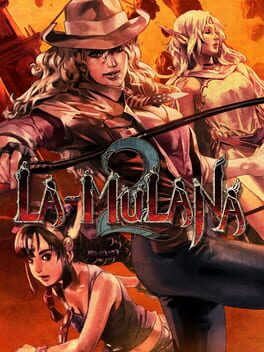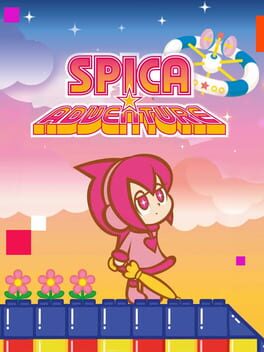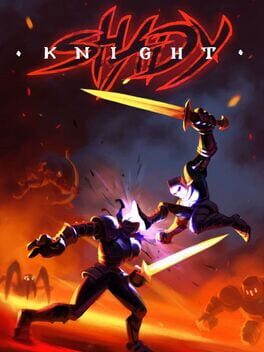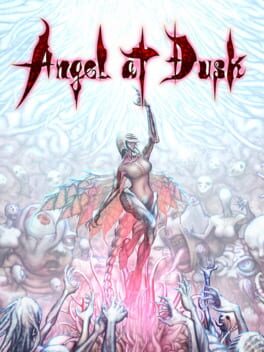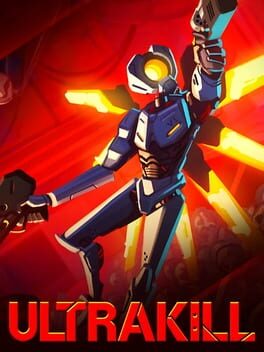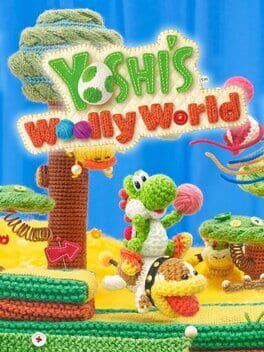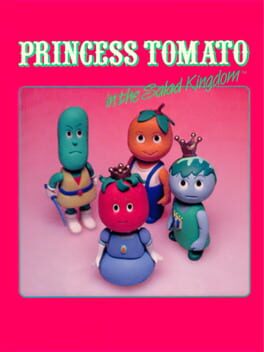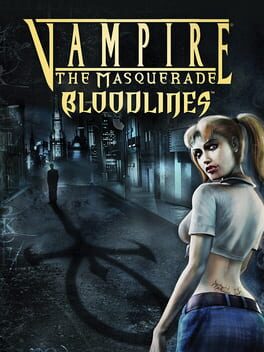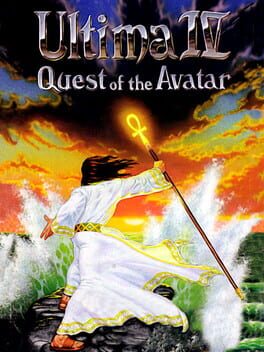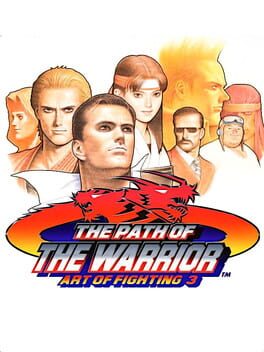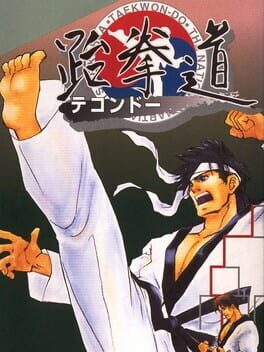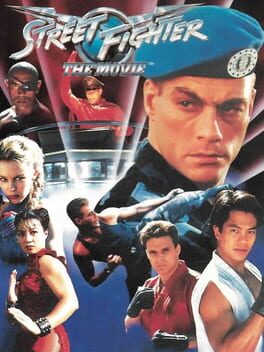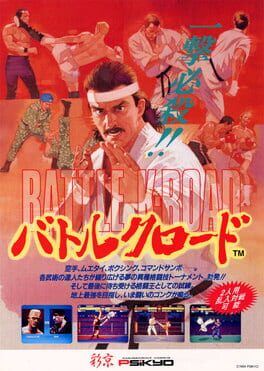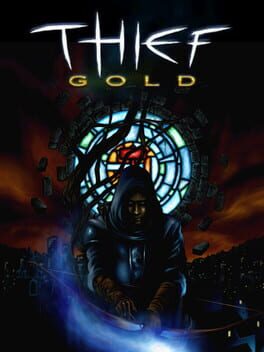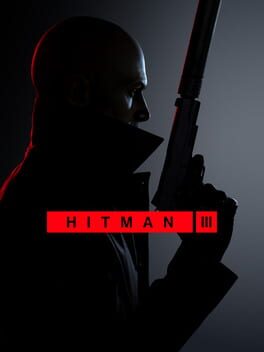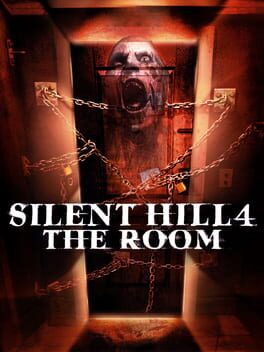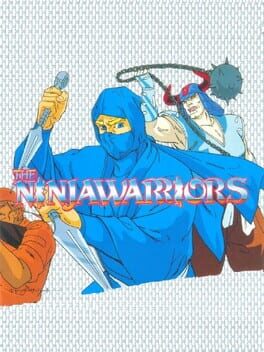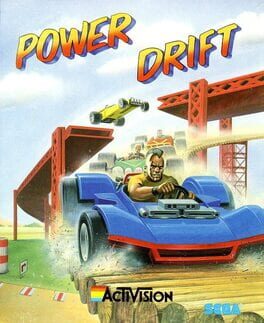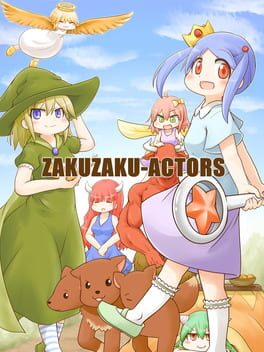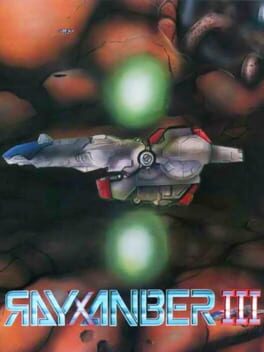CModel
129 reviews liked by CModel
Ninja Gaiden II
2008
NG2 sits squarely between grindhouse shlock and yukio mishima's erotic fascination with guido reni's perfectly penetrated saint sebastian. it frames deaths both as uncritically Sick As Fuck and hypermasculine poetic climax; peerless in its ability to find perverse beauty in carnage while reveling in how cool it looks when a head goes gusher mode
for something best known for involuntary amputations, torrents of blood, and forward motion, it's surprisingly graceful and delicate. almost everything comes undone with a few swings and the aestheticization of violence is so heightened it verges on romanticism. much like its predecessor it revolves around deceptively simple movement and positioning over dazzling combo sequences, but the adventure bits have been hacked off to make room for a more laterally complex combat gauntlet where all inhabitance exists to maim and disfigure for the good of the greater limb economy
going in I thought the loss of black's circuitous world design would be a knock against it, but it wasn't. turns out you can make more linear, directed stages that aren't boring as fuck, who knew? 😲😲😲 the ghost lake with those dreamy overlaid effects, the castlevania clocktower, the coliseum, the airship; there're so many neat ideas and memorable flourishes in even the most straightforward bits. any time someone tells me 10 hours of homogeneous slop corridors is Good, Actually I'm gonna roll my eyes just a little bit harder from now on cos this shit has a werewolf kitchen
how much you enjoy it's gonna depend on your tolerance and appreciation for at least some amount of bullshit. there's no denying it's one of the all time messy bitch games that strains and grates against good taste, better judgement, and hardware itself. the infamous staircase sequence grinding and sputtering to an underwater crawl exemplifies its attitude better than any amount of polish ever could: they knew they shouldn't do it, did it anyway, and it ended up the best use of slowdown outside of STGs
on the other hand, there are some pretty big misses in the boss department, and the way it ramps up higher difficulties (mentor, master ninja) isn't gonna work for everyone. you'll know pretty fast if stuff like Incendiary Shurikens makes your hairline recede to some heretofore unknown ass norwood or inspires you to learn the tricks to deal with them, and honestly I don't think there's a wrong answer. but when you manage to chain the iframes just right to avoid the IS explosion, hit the On Landing Ultimate Technique, sequester a bunch of armless fucks on the other side of the arena, and toss their buddies into the wall so their legs blow off, it reaches a level of perfect survivalism other games haven't even considered
like, yeah, no one was sitting up all night dreaming of "the resident evil dogs but way worse", or gigadeath, or the bloom armadillos, but when it all comes together it's so good I wanna hoot and holler Team Ninja #1 with a big foam hand. I am in love with the eclipse scythe, I am starting to see humans as limb holsters. no amount of shit ass centaurs can sway me. I'm gonna bring back ratings and 5.0 is the NG2 rating. fuck itsuno's butthole tree
early on as I was running thru venetian canals, izuna dropping fiends headfirst onto the water's surface like it was concrete, I thought about how lucky everyone else was that this released hurried and unfinished. the genre dodged a real End Of History moment by the narrowest margins; another six months and this would've been untouchable. sigma could've finished the job, but Team Ninja Dog used the opportunity to backtrack on NG2's entire identity instead and then lose the source code for good measure. a fuck up so big it's still the best reason to buy an xbox in 2024
anyway, between the big gay mishima energy here and the awooga hello nurse stuff in NGB I'm claiming the ninja gaiden duology as official Bi Dude Canon, even if ryu's ass looks a lot like hank hill's sometimes
I ain't claiming the third one
for something best known for involuntary amputations, torrents of blood, and forward motion, it's surprisingly graceful and delicate. almost everything comes undone with a few swings and the aestheticization of violence is so heightened it verges on romanticism. much like its predecessor it revolves around deceptively simple movement and positioning over dazzling combo sequences, but the adventure bits have been hacked off to make room for a more laterally complex combat gauntlet where all inhabitance exists to maim and disfigure for the good of the greater limb economy
going in I thought the loss of black's circuitous world design would be a knock against it, but it wasn't. turns out you can make more linear, directed stages that aren't boring as fuck, who knew? 😲😲😲 the ghost lake with those dreamy overlaid effects, the castlevania clocktower, the coliseum, the airship; there're so many neat ideas and memorable flourishes in even the most straightforward bits. any time someone tells me 10 hours of homogeneous slop corridors is Good, Actually I'm gonna roll my eyes just a little bit harder from now on cos this shit has a werewolf kitchen
how much you enjoy it's gonna depend on your tolerance and appreciation for at least some amount of bullshit. there's no denying it's one of the all time messy bitch games that strains and grates against good taste, better judgement, and hardware itself. the infamous staircase sequence grinding and sputtering to an underwater crawl exemplifies its attitude better than any amount of polish ever could: they knew they shouldn't do it, did it anyway, and it ended up the best use of slowdown outside of STGs
on the other hand, there are some pretty big misses in the boss department, and the way it ramps up higher difficulties (mentor, master ninja) isn't gonna work for everyone. you'll know pretty fast if stuff like Incendiary Shurikens makes your hairline recede to some heretofore unknown ass norwood or inspires you to learn the tricks to deal with them, and honestly I don't think there's a wrong answer. but when you manage to chain the iframes just right to avoid the IS explosion, hit the On Landing Ultimate Technique, sequester a bunch of armless fucks on the other side of the arena, and toss their buddies into the wall so their legs blow off, it reaches a level of perfect survivalism other games haven't even considered
like, yeah, no one was sitting up all night dreaming of "the resident evil dogs but way worse", or gigadeath, or the bloom armadillos, but when it all comes together it's so good I wanna hoot and holler Team Ninja #1 with a big foam hand. I am in love with the eclipse scythe, I am starting to see humans as limb holsters. no amount of shit ass centaurs can sway me. I'm gonna bring back ratings and 5.0 is the NG2 rating. fuck itsuno's butthole tree
early on as I was running thru venetian canals, izuna dropping fiends headfirst onto the water's surface like it was concrete, I thought about how lucky everyone else was that this released hurried and unfinished. the genre dodged a real End Of History moment by the narrowest margins; another six months and this would've been untouchable. sigma could've finished the job, but Team Ninja Dog used the opportunity to backtrack on NG2's entire identity instead and then lose the source code for good measure. a fuck up so big it's still the best reason to buy an xbox in 2024
anyway, between the big gay mishima energy here and the awooga hello nurse stuff in NGB I'm claiming the ninja gaiden duology as official Bi Dude Canon, even if ryu's ass looks a lot like hank hill's sometimes
I ain't claiming the third one
Ico
2012
cherishes human connection in an endearingly immature way. very quaint but also overbearingly self-conscious in its approach to standard conventions, sometimes to a fault? “design by subtraction” sounds genius on paper, though to me it can lend itself to one of two mentalities in execution. it pushes the player towards experimentation; resulting in immense satisfaction when success occurs due to intuitive forward-thinking, or the absence of any emotion at all in triumph as the logic of the solution may have never transpired within the player. thankfully i think ico manages to lean more towards the former overall with only a few moments that underwhelmed my train of thought. the inquisition of the existence of swinging on chains was that of satisfaction. i noticed when jumping on chains that they’d naturally swing back and forth a little, so i figured there was a way to voluntarily execute that on my own and voilà! the action button had answered my prayers. in opposition to this, much later into the game you’re required to blow up the base of a water tower to progress, as for some reason when its blown up part of the tower conveniently falls to form a bridge leading to the next part of the area. this seemed odd to me because there’s… no indication this would happen and i dont think the average person would assume it’d either. you just throw a bomb at the tower because in the scenario there’s no other options of what to do. this was a time where i was met with dissatisfaction in puzzle solving. even if it is kinda minor it still racked my brain a bit.
anyway i believe this “subtraction” psychology applies to more than just the diminishing of useless aspects that dont add to the artist’s vision. namely it contributes to the progression. frequently we’re paraded with the great expanse of the castle utilizing overhead views and wide shots. in continuing our journey we inherently subtract the unknown of that expanse, and perhaps any fears of it that had construed our view of it. i suppose any action in the (or any) game can be interpreted as a subtraction. subtracting enemies, problems, etc etc…
some further things i had noted…
i was heavily reminded of love-de-lic and cing’s work while invested, i think mainly because of the childlike innocence on display in both of our protagonists alongside the organic vibes of the atmosphere respectively. ico’s selflessness struck me in a similar way to moon’s main character and yorda that of another code’s ashley.
the deprivation of any music aside from minor points is an oddly fitting choice that i appreciate a lot. im a sucker for nature ambience and this is no exception. in a way it kept me grounded throughout the entire experience.
the first time i was met with the blissful save theme it had sounded awfully familiar, within seconds my mind uttered “Based God sampled this!” precisely in Flowers Rise on batshit insane mixtape GODS FATHER. i fucking love that tape man i’ll take any chance i can get to shill it.
this was a really resonant experience for me and i’m glad i finally got to this one. i definitely see where people like taro and miyazaki were influenced here. in the industry nowadays you can still feel tremors that this game insinuated way back when (for better or for worse). brilliant display of the importance of environmental attention to detail.
anyway i believe this “subtraction” psychology applies to more than just the diminishing of useless aspects that dont add to the artist’s vision. namely it contributes to the progression. frequently we’re paraded with the great expanse of the castle utilizing overhead views and wide shots. in continuing our journey we inherently subtract the unknown of that expanse, and perhaps any fears of it that had construed our view of it. i suppose any action in the (or any) game can be interpreted as a subtraction. subtracting enemies, problems, etc etc…
some further things i had noted…
i was heavily reminded of love-de-lic and cing’s work while invested, i think mainly because of the childlike innocence on display in both of our protagonists alongside the organic vibes of the atmosphere respectively. ico’s selflessness struck me in a similar way to moon’s main character and yorda that of another code’s ashley.
the deprivation of any music aside from minor points is an oddly fitting choice that i appreciate a lot. im a sucker for nature ambience and this is no exception. in a way it kept me grounded throughout the entire experience.
the first time i was met with the blissful save theme it had sounded awfully familiar, within seconds my mind uttered “Based God sampled this!” precisely in Flowers Rise on batshit insane mixtape GODS FATHER. i fucking love that tape man i’ll take any chance i can get to shill it.
this was a really resonant experience for me and i’m glad i finally got to this one. i definitely see where people like taro and miyazaki were influenced here. in the industry nowadays you can still feel tremors that this game insinuated way back when (for better or for worse). brilliant display of the importance of environmental attention to detail.
This is strictly reviewing the base-game content of A Realm Reborn (not including the post-patch epilogue quests leading into Heavensward).
I COMPLETELY understand why most people will tell you to either play through ARR as fast as possible or buy the skip and watch a story recap, because, unfortunately, yes, it is a fairly substandard by-the-numbers Final Fantasy story. The game does NOT do a lot to make itself very engaging to play outside of a couple dungeons nearing the end of the story. If you're not familiar with the prior story of what this game was before ARR, most of the characters in the story will seem paper-thin and unimpressive. It's a shame really, because there's a ton of characters here that were given a good amount of depth prior to ARR that you simply will not see reflected here.
But honestly? All of these negatives, which in other games might be enough for me to drop them, did not really bother me all too much. It was probably because I was playing a Lalafell Warrior because the idea of being a tiny guy running around holding all the aggro was really funny to me, and I honestly had a pretty good time getting to play that out. I did a duty roulette once where I got put into a premade group of three Miqo'te girls and they all patted me on the head before leaving the instance when we finished. So that was pretty cool.
Much of me has been... 'trained', I guess, to really pay attention to the inner workings of games to evaluate them. My angle with games is often to analyze mechanics, understand what various systems exist in the game and see how they interact or don't. Yet, MMOs, a genre that I've only recently experienced through vanilla WoW private servers (rest in piece nostalrius) and like two weeks of playing Runescape on my second monitor, can't really be held to this standard. It might be more accurate to say that it isn't fair to hold them to this standard, mainly because the 'massively multiplayer' aspect of MMOs adds a lot of gray areas when it comes to forming a concrete 'objective' analysis of video games. In single player-games, regardless of how many different playstyles any single game might be able to account for in it's design, the ways a player interfaces with the game appear countably finite. Every player, regardless of specific choices in their gameplay, will encounter the same problems, story checkpoints and other scenarios that effectively funnel the immersion and agency of the player into predetermined outcomes. It's not possible for developers to create a truly unique outcome for every different way a player may approach a problem. MMOs, being intrinsically social games, are designed to truly offer a scope of choice most single-player experiences simply aren't equipped to replicate. What this leads to is several different strata and substrata of players who are all playing the same game, but for entirely different purposes and goals. This is how you get people like pure-crafters, immersive role-players, the Limsa Lominsa catgirls, and even player groups and discords solely bonded because they all chose to play as Lalafells. The scope of MMOs is something more traditional and technical frameworks for understanding games can't really talk about without missing the forest for the trees. I really hope i'm using that metaphor correctly.
Point being, I think Final Fantasy XIV is a pretty special game, through and through. For every part that
[We are announcing the end of this review of Final Fantasy XIV Online. We thank all readers of the review for the time and energy they have spent in reading and supporting this publication. If we had a cool seven minute long music video to commemorate this occasion, this is where we'd put it.]
I COMPLETELY understand why most people will tell you to either play through ARR as fast as possible or buy the skip and watch a story recap, because, unfortunately, yes, it is a fairly substandard by-the-numbers Final Fantasy story. The game does NOT do a lot to make itself very engaging to play outside of a couple dungeons nearing the end of the story. If you're not familiar with the prior story of what this game was before ARR, most of the characters in the story will seem paper-thin and unimpressive. It's a shame really, because there's a ton of characters here that were given a good amount of depth prior to ARR that you simply will not see reflected here.
But honestly? All of these negatives, which in other games might be enough for me to drop them, did not really bother me all too much. It was probably because I was playing a Lalafell Warrior because the idea of being a tiny guy running around holding all the aggro was really funny to me, and I honestly had a pretty good time getting to play that out. I did a duty roulette once where I got put into a premade group of three Miqo'te girls and they all patted me on the head before leaving the instance when we finished. So that was pretty cool.
Much of me has been... 'trained', I guess, to really pay attention to the inner workings of games to evaluate them. My angle with games is often to analyze mechanics, understand what various systems exist in the game and see how they interact or don't. Yet, MMOs, a genre that I've only recently experienced through vanilla WoW private servers (rest in piece nostalrius) and like two weeks of playing Runescape on my second monitor, can't really be held to this standard. It might be more accurate to say that it isn't fair to hold them to this standard, mainly because the 'massively multiplayer' aspect of MMOs adds a lot of gray areas when it comes to forming a concrete 'objective' analysis of video games. In single player-games, regardless of how many different playstyles any single game might be able to account for in it's design, the ways a player interfaces with the game appear countably finite. Every player, regardless of specific choices in their gameplay, will encounter the same problems, story checkpoints and other scenarios that effectively funnel the immersion and agency of the player into predetermined outcomes. It's not possible for developers to create a truly unique outcome for every different way a player may approach a problem. MMOs, being intrinsically social games, are designed to truly offer a scope of choice most single-player experiences simply aren't equipped to replicate. What this leads to is several different strata and substrata of players who are all playing the same game, but for entirely different purposes and goals. This is how you get people like pure-crafters, immersive role-players, the Limsa Lominsa catgirls, and even player groups and discords solely bonded because they all chose to play as Lalafells. The scope of MMOs is something more traditional and technical frameworks for understanding games can't really talk about without missing the forest for the trees. I really hope i'm using that metaphor correctly.
Point being, I think Final Fantasy XIV is a pretty special game, through and through. For every part that
[We are announcing the end of this review of Final Fantasy XIV Online. We thank all readers of the review for the time and energy they have spent in reading and supporting this publication. If we had a cool seven minute long music video to commemorate this occasion, this is where we'd put it.]
Quest for Moomoo
2023
CN: Anti-gamer sentiments, intellectual discussions of 'games', lots of reference quotations, Feminist sentiment
Stated Potential Conflicts of Interest: Kye is one of my closest friends at the moment, however, it's a non-monetary relationship. However, I do post all of my write up on games in her invitation only discord server as its one of only 3 places I have to share my write ups off site with people who might be users here (the other 2 being another invitation only discord, and twitter).
Policy
--------------------------------------------------------------------------------------------
Reflects my favourite type of videoplay jank, you have a PNG image for a title screen with the minimum number of options to choose, and then you're dropped into a floating environment box in the middle of the sky unable to know how to interact with things, no exposition either. If you move the camera the trees will switch position and hang off the side. It takes a second to figure out what the controls are here for interacting bizarre objects. None of these are complaints against the experience though, it enhances the strangeness of the environment that much more. The Catamites' writes on the "computer memories" in play environments stating
"playing a computer game can be a strangely unmemorable activity - move here, move there, eat the cherries, etc. we keep track of a kind of vague gestalt impression of what's going on but it's hard to remember exactly what we've just been doing or why, in part because the game keeps track of that for us. in many of lilith's games this perpetual present is placed against a frozen and inscrutable memory world, and part of their power comes from playing with the back and forth between the two forces."
I think this videoplay intervenes on that usual fetchquest style of play by dropping you into a world without the grace of some expository explanation, and by the fetch quest itself being truncated. Most of play is in figuring out the nuance of controls, how to 'express' Kye.
After you get a hang of the controls, the endearing quality of this usually generic 3D RPGMaker asset type visual style sinks. Everything about these assets is bright, soothing, and melancholy. The camera panning to a fixed position on the other end of the environment box amuses you when you realize that 2/4 of them are obscured by trees.
princess/GirlSoftware argues in terms of channeling girliness that:
"if u can reimagine a game but make it girlier ur already contributing more to the medium than any guy as far as im concerned."
In this case, Kye has reimagined a feminine melancholy in what is often referred to as the 'joke game' or 'gag game'. Videoplay like You Have To Burn The Rope and Space Funeral are both games that amuse me, but quantify a more belligerent aura around their appeals of videoplay winstate hollowness.
I think this piece is snubbing false binaries of choice in games and leads to its punchline in a mellow enough way that its stings when it happens. It's a joke, but one that sees an anxious cruelty in losing a loved one and trying to find them again.
I recognize the perception as just paying lip service here, but I don't think that's the case. I think instead it's because I enjoy systems that enhance 'aliveness' and quell 'deadness'. This is a concept I've picked up from Alt Designer and professor Melos who defines these aspects as follows "An Alivegame is a game whose purpose is something to enrich the lives and humanity of those who play it. It can be as simple as a 1-hour game made for a friend's birthday." in contrast to a deadgame which is "On the other path of history, we have the endless, dead, self-consuming Deadgame Industry, exhausting the creative lives of millions on producing these empty games that might be ‘fun’ but are, mostly, just there for us to whittle away the time and leave ourselves unchanged." While I've abandoned all use of the term 'game' for the moment, as I believe its very usage advocates deadness¹ , advocating instead for something like 'play environment', 'piece', 'videoplay', etc. I believe the general idea of aliveness being found in experiences small in scale is spot on, though I disagree slightly with his humanitarian agenda. While the aspect of 'deadness' in a play experience can speak to aspects of monetization, crunch, minority hatred, etc. which are all hideous. The appreciation for aliveness has nothing for me to do with a 'human' connection. Instead, its a connection to a 'thrust' in the articulation of a play experience as doing something distinct and beautiful is usually felt here in the same way that it is for poetry in the written word. Regardless of if experience is ambiguous in function, or clear, the compactness of the form allows for all of the dangly bits to read out much more clearly. Simply put, I just think their formal quality of engagement is superior in every way, and the only reason people play 'dead' games is because of pleasure trickery and to be a 'part of the discussion'.
The play environments I engage with at this point are mainly from a site brimming of aliveness, Itchio. The aura in general there is in a more open trading of communal resources and function, with few if any of the financialized aspects that can create hierarchies that build towards deadness and gamification². I believe deadness in games can be valuable, but mainly as a reflection of current capitalist conditions in the arts rather than any innate appreciation in the 'hollowness' of the corpse. Functionally deadness can also depict to me a specific kind of lost melancholy but it has to be done very particularly. Regardless deadness is not a significant value in what I tend to pursue.
That said, aliveness doesn't completely explain my preferences either. People may wonder why I tend to like stuff like this, supposed bottom of the barrel videoplay jank because its 'obviously rushed'. Well, it's ultimately because these small PC throwaway experiences are consistently transformative and new, and allow for a large amount of comparative data to draw on in relation. I truly am getting something out of experiences like this, it's not just for show.
The only main issue I ever tend to take with small scale alive play experiences is aspects of writing, stuff like typos or weak word choice, excessive alliteration, etc. Those have been avoided here and that's good enough for me. I think its better to not see yourself as being 'tricked' or 'disappointed' by such small experiences. Nor should be any shame in conveying a world in 30 minutes or less. On the contrary, the thrust of that shame should go to audience mob vindictiveness over the grievance of 'expectations'. Anyway, I hope Kye makes more of these soon I thought it was really cute and has exactly the visual sensitivity I crave for these days.
----------------------
1. I recognize it's an extremely bizarre take on my part to throw out the term 'game' as if its a dirty word, but I think it might be useful to know I'm not alone. Iconoclast dev Chris Crawford says something similar when laying out the syllogistic logical network between 'game', 'play', and 'fun' before ultimately lampooning them, saying that
"The problem with this reasoning lies in the fact that the words "game," "play," and "fun" are in flux. They have historically been associated with the behavior of children, yet in the last century, with the creation of significant amounts of leisure time, adults have taken up play as well. This new, adult kind of play is still play by any definition, but the word "fun" doesn't quite fit the adult's experience."
He uses this analysis of the rampant fluctuation in the terminology to prod at the term 'fun' as destabilized, which I think is correct to do. This was mainly for the attempt to lampoon the 'Fun Factor' theory of design, but where does that leave 'game'. Well in my view this term is also a form of strict infantilization, if you frame such experience as a 'game' then you risk de-emphasizing their maturity into some isolated experience with no 'bioreality' (that you don't spend time sitting with it, or use your eyes to actually view it, etc). Furthermore that its also not something to be taken seriously or considered outside tabletop game functions like a win state or as if an experience is supposed to 'give' you something in particular, like you would a child. It also deemphasizes risk, traffic lights are a 'game' within the field of game theory but playing it as if its zero sum (valuing your own time at the expense of everyone else) will cause you to risk suffering and death. If everyone framed and treated traffic lights as a 'game' then people would try to 'game' the system and endanger themselves and others more in the process. In my view this 'gamification' of everyday life is a bad thing. By compelling myself to speak of exeriences as if they are games is to pull a highway robbery on what they are expressing to me. I take no judgement for people who continue to use it but I want to rid myself of it, at least for a while.
On the other hand, what about the word 'play'? Surely it's culpable of one in the same? For me, concepts of 'leisure' and 'play' at least only speak to the specific behaviors the audience has to engage in, a form of enhanced input. Flipping through channels is 'playing with the TV' you can 'play with' a movie by rewinding it, etc but neither is a 'game'. Just in the same way that I've come to a violent opinion within myself that there is no such function as 'the arts' the same is said for 'games'. They both reek of me of industry, trying to justify its habituation. That all said, in order to anchor down what we are specifically doing here is to call it a computer 'play environment' so that we can segregate it as an isolated function of experience. We can be even more word anal some other time.
2. If you would excuse the tangent, there's one exception: The GameJam. GameJam's are not in themselves a bad concept, but I take issue with the time constraints on many of them, often being only a week or two. Along with often the designation of a 'winner'. Meaning that what becomes rewarded from this structure is a small scale version of the 'crunch' hierarchy which praises the most 'polished' work of the bunch. Other parasitic process of play design, voting out all the aspects of a games work on a public pool for the 'best game'. All this crap ends up creating a lot of works on the platform with a profound amount of 'deadness' within them, while also causing an unfathomable amount of harm. At this point I find those jams utterly deplorable in function. I've explored this 'abandonment' of creative labor in my Yo! Noid 2 write up here if you're interested, despite my love of it I think it's deeply engaged with 'deadness' as they had to go back and make a more 'finalized' version of the game on its own later due to bugs etc. With that said, there are good GameJams, but they are far and few between as of now. It should also be mentioned that most games included into these more deplorable jams do end up being good games but they usually are not the 'winners' of those jams which tend inhabit the most 'deadness'.
-----------------------------
References:
Betsy Hospital Game FAQ by the Catamites http://harmonyzone.org/text/betsyhospital.html
video game feminization hypnosis by GirlSoftware
https://girlsoftware.itch.io/vgfh
Deadgames and Alivegames by Melos https://melodicambient.neocities.org/posts/2021-01-10%20Deadgames%20and%20Alivegames
Excerpt from Chris Crawford on Game Design
https://flylib.com/books/en/2.178.1.21/1/
Stated Potential Conflicts of Interest: Kye is one of my closest friends at the moment, however, it's a non-monetary relationship. However, I do post all of my write up on games in her invitation only discord server as its one of only 3 places I have to share my write ups off site with people who might be users here (the other 2 being another invitation only discord, and twitter).
Policy
--------------------------------------------------------------------------------------------
Reflects my favourite type of videoplay jank, you have a PNG image for a title screen with the minimum number of options to choose, and then you're dropped into a floating environment box in the middle of the sky unable to know how to interact with things, no exposition either. If you move the camera the trees will switch position and hang off the side. It takes a second to figure out what the controls are here for interacting bizarre objects. None of these are complaints against the experience though, it enhances the strangeness of the environment that much more. The Catamites' writes on the "computer memories" in play environments stating
"playing a computer game can be a strangely unmemorable activity - move here, move there, eat the cherries, etc. we keep track of a kind of vague gestalt impression of what's going on but it's hard to remember exactly what we've just been doing or why, in part because the game keeps track of that for us. in many of lilith's games this perpetual present is placed against a frozen and inscrutable memory world, and part of their power comes from playing with the back and forth between the two forces."
I think this videoplay intervenes on that usual fetchquest style of play by dropping you into a world without the grace of some expository explanation, and by the fetch quest itself being truncated. Most of play is in figuring out the nuance of controls, how to 'express' Kye.
After you get a hang of the controls, the endearing quality of this usually generic 3D RPGMaker asset type visual style sinks. Everything about these assets is bright, soothing, and melancholy. The camera panning to a fixed position on the other end of the environment box amuses you when you realize that 2/4 of them are obscured by trees.
princess/GirlSoftware argues in terms of channeling girliness that:
"if u can reimagine a game but make it girlier ur already contributing more to the medium than any guy as far as im concerned."
In this case, Kye has reimagined a feminine melancholy in what is often referred to as the 'joke game' or 'gag game'. Videoplay like You Have To Burn The Rope and Space Funeral are both games that amuse me, but quantify a more belligerent aura around their appeals of videoplay winstate hollowness.
I think this piece is snubbing false binaries of choice in games and leads to its punchline in a mellow enough way that its stings when it happens. It's a joke, but one that sees an anxious cruelty in losing a loved one and trying to find them again.
I recognize the perception as just paying lip service here, but I don't think that's the case. I think instead it's because I enjoy systems that enhance 'aliveness' and quell 'deadness'. This is a concept I've picked up from Alt Designer and professor Melos who defines these aspects as follows "An Alivegame is a game whose purpose is something to enrich the lives and humanity of those who play it. It can be as simple as a 1-hour game made for a friend's birthday." in contrast to a deadgame which is "On the other path of history, we have the endless, dead, self-consuming Deadgame Industry, exhausting the creative lives of millions on producing these empty games that might be ‘fun’ but are, mostly, just there for us to whittle away the time and leave ourselves unchanged." While I've abandoned all use of the term 'game' for the moment, as I believe its very usage advocates deadness¹ , advocating instead for something like 'play environment', 'piece', 'videoplay', etc. I believe the general idea of aliveness being found in experiences small in scale is spot on, though I disagree slightly with his humanitarian agenda. While the aspect of 'deadness' in a play experience can speak to aspects of monetization, crunch, minority hatred, etc. which are all hideous. The appreciation for aliveness has nothing for me to do with a 'human' connection. Instead, its a connection to a 'thrust' in the articulation of a play experience as doing something distinct and beautiful is usually felt here in the same way that it is for poetry in the written word. Regardless of if experience is ambiguous in function, or clear, the compactness of the form allows for all of the dangly bits to read out much more clearly. Simply put, I just think their formal quality of engagement is superior in every way, and the only reason people play 'dead' games is because of pleasure trickery and to be a 'part of the discussion'.
The play environments I engage with at this point are mainly from a site brimming of aliveness, Itchio. The aura in general there is in a more open trading of communal resources and function, with few if any of the financialized aspects that can create hierarchies that build towards deadness and gamification². I believe deadness in games can be valuable, but mainly as a reflection of current capitalist conditions in the arts rather than any innate appreciation in the 'hollowness' of the corpse. Functionally deadness can also depict to me a specific kind of lost melancholy but it has to be done very particularly. Regardless deadness is not a significant value in what I tend to pursue.
That said, aliveness doesn't completely explain my preferences either. People may wonder why I tend to like stuff like this, supposed bottom of the barrel videoplay jank because its 'obviously rushed'. Well, it's ultimately because these small PC throwaway experiences are consistently transformative and new, and allow for a large amount of comparative data to draw on in relation. I truly am getting something out of experiences like this, it's not just for show.
The only main issue I ever tend to take with small scale alive play experiences is aspects of writing, stuff like typos or weak word choice, excessive alliteration, etc. Those have been avoided here and that's good enough for me. I think its better to not see yourself as being 'tricked' or 'disappointed' by such small experiences. Nor should be any shame in conveying a world in 30 minutes or less. On the contrary, the thrust of that shame should go to audience mob vindictiveness over the grievance of 'expectations'. Anyway, I hope Kye makes more of these soon I thought it was really cute and has exactly the visual sensitivity I crave for these days.
----------------------
1. I recognize it's an extremely bizarre take on my part to throw out the term 'game' as if its a dirty word, but I think it might be useful to know I'm not alone. Iconoclast dev Chris Crawford says something similar when laying out the syllogistic logical network between 'game', 'play', and 'fun' before ultimately lampooning them, saying that
"The problem with this reasoning lies in the fact that the words "game," "play," and "fun" are in flux. They have historically been associated with the behavior of children, yet in the last century, with the creation of significant amounts of leisure time, adults have taken up play as well. This new, adult kind of play is still play by any definition, but the word "fun" doesn't quite fit the adult's experience."
He uses this analysis of the rampant fluctuation in the terminology to prod at the term 'fun' as destabilized, which I think is correct to do. This was mainly for the attempt to lampoon the 'Fun Factor' theory of design, but where does that leave 'game'. Well in my view this term is also a form of strict infantilization, if you frame such experience as a 'game' then you risk de-emphasizing their maturity into some isolated experience with no 'bioreality' (that you don't spend time sitting with it, or use your eyes to actually view it, etc). Furthermore that its also not something to be taken seriously or considered outside tabletop game functions like a win state or as if an experience is supposed to 'give' you something in particular, like you would a child. It also deemphasizes risk, traffic lights are a 'game' within the field of game theory but playing it as if its zero sum (valuing your own time at the expense of everyone else) will cause you to risk suffering and death. If everyone framed and treated traffic lights as a 'game' then people would try to 'game' the system and endanger themselves and others more in the process. In my view this 'gamification' of everyday life is a bad thing. By compelling myself to speak of exeriences as if they are games is to pull a highway robbery on what they are expressing to me. I take no judgement for people who continue to use it but I want to rid myself of it, at least for a while.
On the other hand, what about the word 'play'? Surely it's culpable of one in the same? For me, concepts of 'leisure' and 'play' at least only speak to the specific behaviors the audience has to engage in, a form of enhanced input. Flipping through channels is 'playing with the TV' you can 'play with' a movie by rewinding it, etc but neither is a 'game'. Just in the same way that I've come to a violent opinion within myself that there is no such function as 'the arts' the same is said for 'games'. They both reek of me of industry, trying to justify its habituation. That all said, in order to anchor down what we are specifically doing here is to call it a computer 'play environment' so that we can segregate it as an isolated function of experience. We can be even more word anal some other time.
2. If you would excuse the tangent, there's one exception: The GameJam. GameJam's are not in themselves a bad concept, but I take issue with the time constraints on many of them, often being only a week or two. Along with often the designation of a 'winner'. Meaning that what becomes rewarded from this structure is a small scale version of the 'crunch' hierarchy which praises the most 'polished' work of the bunch. Other parasitic process of play design, voting out all the aspects of a games work on a public pool for the 'best game'. All this crap ends up creating a lot of works on the platform with a profound amount of 'deadness' within them, while also causing an unfathomable amount of harm. At this point I find those jams utterly deplorable in function. I've explored this 'abandonment' of creative labor in my Yo! Noid 2 write up here if you're interested, despite my love of it I think it's deeply engaged with 'deadness' as they had to go back and make a more 'finalized' version of the game on its own later due to bugs etc. With that said, there are good GameJams, but they are far and few between as of now. It should also be mentioned that most games included into these more deplorable jams do end up being good games but they usually are not the 'winners' of those jams which tend inhabit the most 'deadness'.
-----------------------------
References:
Betsy Hospital Game FAQ by the Catamites http://harmonyzone.org/text/betsyhospital.html
video game feminization hypnosis by GirlSoftware
https://girlsoftware.itch.io/vgfh
Deadgames and Alivegames by Melos https://melodicambient.neocities.org/posts/2021-01-10%20Deadgames%20and%20Alivegames
Excerpt from Chris Crawford on Game Design
https://flylib.com/books/en/2.178.1.21/1/
Final Fantasy X
2001
Lemmings 3D
1995
Resident Evil 4
2023
Beneath the surface of Resident Evil 4 Remake’s 4K high-definition models, textures, and overly-polished sterile gameplay lies the rotting reactionary corpse of modernity. Resident Evil 4 Remake represents the logical end-point for art under late-stage capitalism, where creators are in a petrified state of artistic stasis where everything old must be modernised, updated, and ‘fixed’. I cannot bring myself to care about this game or the two remakes that preceded it. It’s become a homogenous and trite blob of nothingness, void of any soul or integrity.
Final Fantasy V
1992
this game gets really sold short just for not being as self serious as ff4 and not as grand as the series gets from 6 onward but it's a really spectacular game even outside of its stellar mechanics and practically outdoes ff4 in every way. definitely leans a bit more on comic relief than some people might like but there's some really great moments here and the cast is really strong, especially with galuf and bartz, and exdeath is undercut by fans for how interesting of an antagonist he is. neo exdeath is by far the coolest final boss design in this series to me other than safer sephiroth, and even if he's pretty stock standard on a surface level i think he deserves more credit as a villain. easily my favorite of the snes trilogy of final fantasy games and a game i can't recommend enough to fans of jrpgs
Sin and Punishment
2000
There’s still plenty of games by Treasure that I still haven’t played and hope to play, but I think I’m starting to get a good idea of what makes their best games so captivating, not incidentally because it’s showcased so strongly here. Treasure have this sort of repertoire of mechanics which serve as a constellation around a central idea - encouraging the player to view and approach encounters in different ways - which is always surprising the player with the extent of the interactivity of the experience, and I’ve noticed that how much I like each game can be strongly correlated to how frequently and strongly this central idea is expressed. I understand that this is very abstract, so let’s try and make it more concrete:
Treasure loves parries; the idea of taking a projectile being fired at you and turning it back around. The frequency with which this mechanic occurs in their games really just makes it seem like somebody at the studio thought it was cool as shit (which it is), but it also serves a wider purpose: Projectiles are rarely just obstacles to be avoided, they’re just as equally potential tools. The best iteration I’ve seen of the idea is Mischief Maker’s Cerberus Alpha but Sin and Punishment makes major use of this idea too to provide moments of realisation for the player in a variety of ways. Enemies which initially seem to be threats because they fill the screen with more projectiles are recontextualised as things which help you through your own skill to deal with them, and this is integrated with decision-making; it’s not just “Oh, I can parry this projectile” but also “Oh, I should kill this guy with the rocket launcher last, because he is just giving me rockets to parry.” It's a really great complication to the simple loop of shooting everything that appears on the screen which can make a lot of shmups feel homogenous sometimes.
The second expression is the use of alternate modes, an idea which has gone through several evolutions in Treasure’s history. In the transition from Gunstar Heroes to Alien Soldier, it was decided that allowing the player to switch aiming modes mid-level was superior to a one-time choice, not only because it was more flexible, but because choosing the best mode for the situation in real-time is a deeper expression of skill and knowledge. The next evolution, occurring in Sin and Punishment, was that this choice can be integrated with the skill curve of the game. The lock-on mode of Sin and Punishment drastically helps the player reduce their mental stack, but it makes you do less damage than the manual aiming, so while it’s always ideal to manual aim, every section is essentially asking the player “do you think you have the skill to dodge all this shit and aim simultaneously?”, which rarely has a static answer. Sections where you relied on the lock-on in one playthrough you might “graduate” to manually aiming in the next, and this is such a dynamic, player-driven approach to difficulty.
I would say almost objectively that Ikaruga is the highest expression of this connection between mode-switching and a skill curve (for reasons that I probably don’t need to explain but could probably spend way too long doing anyway), but I really like this incarnation of it simply because of its connection with the early 3D era of the N64. This was Treasure’s first foray into true 3D and their use of it in this game is so joyous and imaginative. Part of why the use of lock-on as a tool for dealing with the mental stack is so effective is because it tasks you with aiming at enemies in the background, enemies above and below you, enemies next to you and even enemies in the foreground in front of you, all of whom can be sending projectiles your way in different 3D planes, it’s a lot to deal with, but that only enhances the foundational shmup satisfaction of feeling like a god because you just dodged a seemingly undodgeable pattern of bullets - which would not be as effective if you were only fired upon from one dimension. The way the game uses shifts in perspective is incredible: traditional rail shooting and run-n-gun blends together in subtle combinations, but then you’ll suddenly fight a boss in an arena where you can rotate 360 degrees around a central point, other parts, like the railcar section evoke a shooting gallery, and there’s a full Gunstar Heroes-esque run-n-gun section in the final level, and the pace of these shifts is so fast that it feels apt to call it a tour-de-force of various 3D shooting-game concepts.
The third expression is the interplay between close and long-range combat. Treasure shooting games very often break up purely ranged combat with degrees of close-quarters combat, an idea which bookends Treasure’s major works, beginning with the claustrophobic fight against Orange on top of a plane in Gunstar Heroes and ending with the fistfight against Deko Gekisho in Star Successor, Radiant Silvergun found a way to sneak in a sword into a genre traditionally dealing only in bullets, and Sin and Punishment’s moments of melee combat are some of the best in the game - flinging Radahn off a cliff and Brad through a window just doesn’t get old. It works, again, because you have to think about the situation and choose which type of attack is best, further fostering this interactivity that purely moving a reticle over an enemy and holding down the shoot button doesn’t.
I wouldn’t say having these elements alone constitutes a good game, but harmonising them to create a complex experience is why I think this and Treasure’s other games are so great. That isn’t to say that Sin and Punishment doesn’t have its own unique things going on though: I think the approach to story here is quite interesting and complements the short yet highly-replayable structure really well. On the first go, story beats like the dream sequence or characters like Achi or even allegiances and motivations of certain characters are incredibly hard to parse, but the fact that they’re so confusing gives the story relevance beyond the first playthrough, since it makes progressively more sense each time. It’s something that I’m surprised more developers don’t take advantage of, kind of like how the way Hades’ story is structured complements its repetitious roguelite structure, this complements the replayable arcade structure.
The music is also really great. Toshiya Yamanaka has remarked that this was thanks to some programmer at Treasure who was capable of programming the N64’s pulse-code modulation, which results in higher sound quality. I don’t really understand that myself, but the music here goes hard, even if it does have some questionable repetitions.
The difficulty modes are also incredibly well done. Easy, medium and hard aren’t just differentiated by damage sliders, sections can be quite radically different on each difficulty as there are added enemies and new attacks, which is basically a perfect execution of difficulty selection in a game like this.
I would be remiss to not mention some of the flaws as I don’t think this is a perfect game. The voice acting is terrible. Don’t get me wrong, I love me some campy, trashy voice acting, but this game is clearly going for a more serious tone and that really clashes with the bad line deliveries. While I prefer the conciseness of this game in general, Star Successor has a better version of melee options, as it’s too easy in this game to spam the attack button to parry anything you want, whereas the sequel demands timing. The first level is also such a snoozefest, even on hard, that it sometimes feels like a chore to go through on a fresh run. Having such an easy first level isn’t even necessary for new players since this game already has quite a good tutorial.
On the whole though this is probably my favourite Treasure game I’ve played so far and the flaws are really not that big of a deal. Really looking forward to playing the Treasure games I haven't played yet (Dynamite Headdy, Gradius V, Bangai-O, Silhouette Mirage, possibly more)
Treasure loves parries; the idea of taking a projectile being fired at you and turning it back around. The frequency with which this mechanic occurs in their games really just makes it seem like somebody at the studio thought it was cool as shit (which it is), but it also serves a wider purpose: Projectiles are rarely just obstacles to be avoided, they’re just as equally potential tools. The best iteration I’ve seen of the idea is Mischief Maker’s Cerberus Alpha but Sin and Punishment makes major use of this idea too to provide moments of realisation for the player in a variety of ways. Enemies which initially seem to be threats because they fill the screen with more projectiles are recontextualised as things which help you through your own skill to deal with them, and this is integrated with decision-making; it’s not just “Oh, I can parry this projectile” but also “Oh, I should kill this guy with the rocket launcher last, because he is just giving me rockets to parry.” It's a really great complication to the simple loop of shooting everything that appears on the screen which can make a lot of shmups feel homogenous sometimes.
The second expression is the use of alternate modes, an idea which has gone through several evolutions in Treasure’s history. In the transition from Gunstar Heroes to Alien Soldier, it was decided that allowing the player to switch aiming modes mid-level was superior to a one-time choice, not only because it was more flexible, but because choosing the best mode for the situation in real-time is a deeper expression of skill and knowledge. The next evolution, occurring in Sin and Punishment, was that this choice can be integrated with the skill curve of the game. The lock-on mode of Sin and Punishment drastically helps the player reduce their mental stack, but it makes you do less damage than the manual aiming, so while it’s always ideal to manual aim, every section is essentially asking the player “do you think you have the skill to dodge all this shit and aim simultaneously?”, which rarely has a static answer. Sections where you relied on the lock-on in one playthrough you might “graduate” to manually aiming in the next, and this is such a dynamic, player-driven approach to difficulty.
I would say almost objectively that Ikaruga is the highest expression of this connection between mode-switching and a skill curve (for reasons that I probably don’t need to explain but could probably spend way too long doing anyway), but I really like this incarnation of it simply because of its connection with the early 3D era of the N64. This was Treasure’s first foray into true 3D and their use of it in this game is so joyous and imaginative. Part of why the use of lock-on as a tool for dealing with the mental stack is so effective is because it tasks you with aiming at enemies in the background, enemies above and below you, enemies next to you and even enemies in the foreground in front of you, all of whom can be sending projectiles your way in different 3D planes, it’s a lot to deal with, but that only enhances the foundational shmup satisfaction of feeling like a god because you just dodged a seemingly undodgeable pattern of bullets - which would not be as effective if you were only fired upon from one dimension. The way the game uses shifts in perspective is incredible: traditional rail shooting and run-n-gun blends together in subtle combinations, but then you’ll suddenly fight a boss in an arena where you can rotate 360 degrees around a central point, other parts, like the railcar section evoke a shooting gallery, and there’s a full Gunstar Heroes-esque run-n-gun section in the final level, and the pace of these shifts is so fast that it feels apt to call it a tour-de-force of various 3D shooting-game concepts.
The third expression is the interplay between close and long-range combat. Treasure shooting games very often break up purely ranged combat with degrees of close-quarters combat, an idea which bookends Treasure’s major works, beginning with the claustrophobic fight against Orange on top of a plane in Gunstar Heroes and ending with the fistfight against Deko Gekisho in Star Successor, Radiant Silvergun found a way to sneak in a sword into a genre traditionally dealing only in bullets, and Sin and Punishment’s moments of melee combat are some of the best in the game - flinging Radahn off a cliff and Brad through a window just doesn’t get old. It works, again, because you have to think about the situation and choose which type of attack is best, further fostering this interactivity that purely moving a reticle over an enemy and holding down the shoot button doesn’t.
I wouldn’t say having these elements alone constitutes a good game, but harmonising them to create a complex experience is why I think this and Treasure’s other games are so great. That isn’t to say that Sin and Punishment doesn’t have its own unique things going on though: I think the approach to story here is quite interesting and complements the short yet highly-replayable structure really well. On the first go, story beats like the dream sequence or characters like Achi or even allegiances and motivations of certain characters are incredibly hard to parse, but the fact that they’re so confusing gives the story relevance beyond the first playthrough, since it makes progressively more sense each time. It’s something that I’m surprised more developers don’t take advantage of, kind of like how the way Hades’ story is structured complements its repetitious roguelite structure, this complements the replayable arcade structure.
The music is also really great. Toshiya Yamanaka has remarked that this was thanks to some programmer at Treasure who was capable of programming the N64’s pulse-code modulation, which results in higher sound quality. I don’t really understand that myself, but the music here goes hard, even if it does have some questionable repetitions.
The difficulty modes are also incredibly well done. Easy, medium and hard aren’t just differentiated by damage sliders, sections can be quite radically different on each difficulty as there are added enemies and new attacks, which is basically a perfect execution of difficulty selection in a game like this.
I would be remiss to not mention some of the flaws as I don’t think this is a perfect game. The voice acting is terrible. Don’t get me wrong, I love me some campy, trashy voice acting, but this game is clearly going for a more serious tone and that really clashes with the bad line deliveries. While I prefer the conciseness of this game in general, Star Successor has a better version of melee options, as it’s too easy in this game to spam the attack button to parry anything you want, whereas the sequel demands timing. The first level is also such a snoozefest, even on hard, that it sometimes feels like a chore to go through on a fresh run. Having such an easy first level isn’t even necessary for new players since this game already has quite a good tutorial.
On the whole though this is probably my favourite Treasure game I’ve played so far and the flaws are really not that big of a deal. Really looking forward to playing the Treasure games I haven't played yet (Dynamite Headdy, Gradius V, Bangai-O, Silhouette Mirage, possibly more)
439 lists liked by CModel
by Bells |
18 Games
by stale_cheeto |
24 Games
by Nacre |
45 Games
by EuanDewar |
211 Games
by BeeKirby |
21 Games
by JabroniAbuser677 |
45 Games
by CorpsSansOrganes |
18 Games
by bwoe |
60 Games
